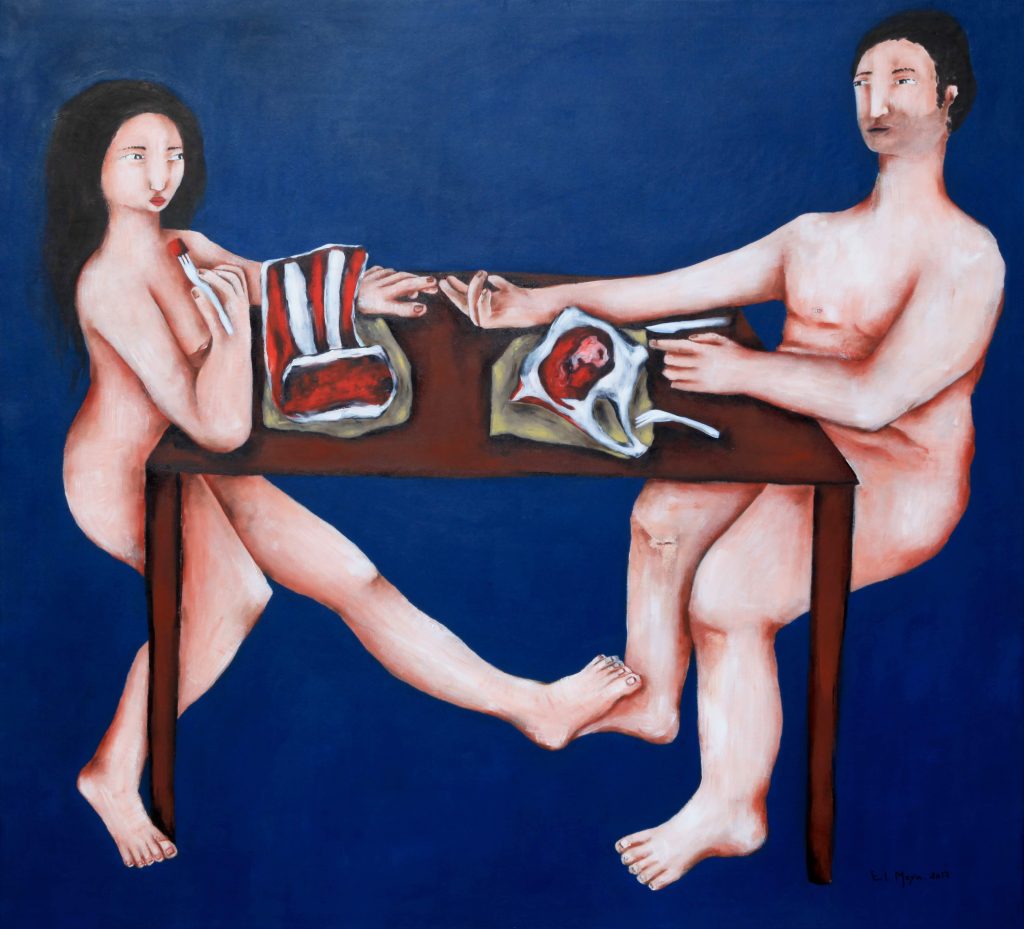rhizome, Algiers, Algeria
20 Mar 2021 - 10 Apr 2021

EL Meya, Le Couple, 2017. 155 x 135 cm. Acrylic on canvas. Private Collection.
An exhibition of EL Meya (Maya Benchikh EL Fegoun) that includes works to be presented for the first time to the public, as they are part of a book released alongside this exhibition.
Oumlil, Oum Lil. This project has a name, a name that is composed as one weaves a web, polysemous by its interweaving of Arab references to the mother and to the night, of Berber reference to the Mediterranean Sea. It is like an invitation to think broadly, to embrace a long history, with reciprocal influences between civilizations.
The Oumlil project is at the junction of an anthropological approach on rites, myths, the sacred and aesthetic reflections on the representation of symbols, on the limits of the representation of sexuality, body, violence, death… that gives it this enormous transgressive charge. There is something performative in this risk-taking. The challenge is there, in the transgression. “There is no innocent eye,” said the art historian Ernst Gombrich.
The first impression falls under the category of visual shock. Although the scope is narrow, EL Meya has avoided falling into provocation with its risks of being gratuitous, counterproductive and repulsive. Her strategy is to astonish, even to disturb; which makes us stop to take the time to understand what painting means, for her and for us. She stretches her canvases between reality and us, to fight against “obviousness”, appearances, against things “taken for granted”, which “are obvious”…
She asks us to walk from canvas to canvas, canvases in front of which we would “freeze-frame”, as if in front of so many screens, to disturb us first, so that we then wonder, once past this first feeling of worrying
strangeness.
Thereby Oumlil project connects portraits of women but also of men to the question of power; she seizes in the family –this smallest common denominator of the social structure- that she scrutinizes at different times; these earthy and disturbing couples to discuss the question of the distribution of authority in marriage; in the house
with “gendered” spaces such as Le Salon or La Rue… She reveals the impact of the domestic division of labor that applies to these notions of interior and exterior spaces as so many hunts held by one or the
other sex.